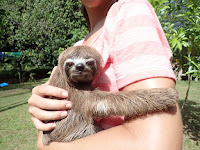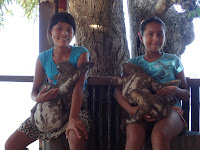The hopes for this blog are to give people an idea of the pros and cons we have come across so far in our ventures.
Having traveled for the past six months we were very used to living on a budget and with very little 'stuff'. This greatly helped us adapt to our new 'island way of living'. Bocas del Toro is a great spot for vacationing and living, but the standards are much different than in places such as Los Angeles or New York City.
Having traveled for the past six months we were very used to living on a budget and with very little 'stuff'. This greatly helped us adapt to our new 'island way of living'. Bocas del Toro is a great spot for vacationing and living, but the standards are much different than in places such as Los Angeles or New York City.
The first thing to get used to is always being sweaty and slightly dirty. There is very little city water and the rest is collected from the rain. Having long hot showers or multiple showers a day is simply not acceptable here. If you are going to move to any island or even country that has a water system such as this, keep that in mind. The next aspect is attire. You can look nice, but having the latest designer fashion is pretty much laughed at and you may not get it back from the laundromat anyway! The basic essentials are all you need. It is quite acceptable to show up for a business meeting in shorts and a tee-shirt or simple sundress. For those in major cities, the attire may be different. Just be sure to read ahead on what's acceptable and what's not.
From a business standpoint one of the major no-nos we've discovered is that you don't go into town trying to 'change' the way business or life is 'done'. Take your time, learn the ways of the culture, and establish how you can make improvements for your own business. After spending a month in Bocas, one thing we discovered is that people really appreciate if you take the time to understand why things are done in certain ways. You may be at the top of your industry in the States, Europe, or Canada, but if you don't take the time to understand your new surroundings there could be a great deal of resistance from the local community.
Some of the best advice we can give is to take a little time and talk to the locals! They are the individuals who could become your best friends or worst enemies.
Good luck!
*** To view more about RnD check out our other social media sites***
Instagram - rndhospitality
Twitter - @rndhospitality
Facebook - RnD Hospitality Group
www.rndhospitalitygroup.com









